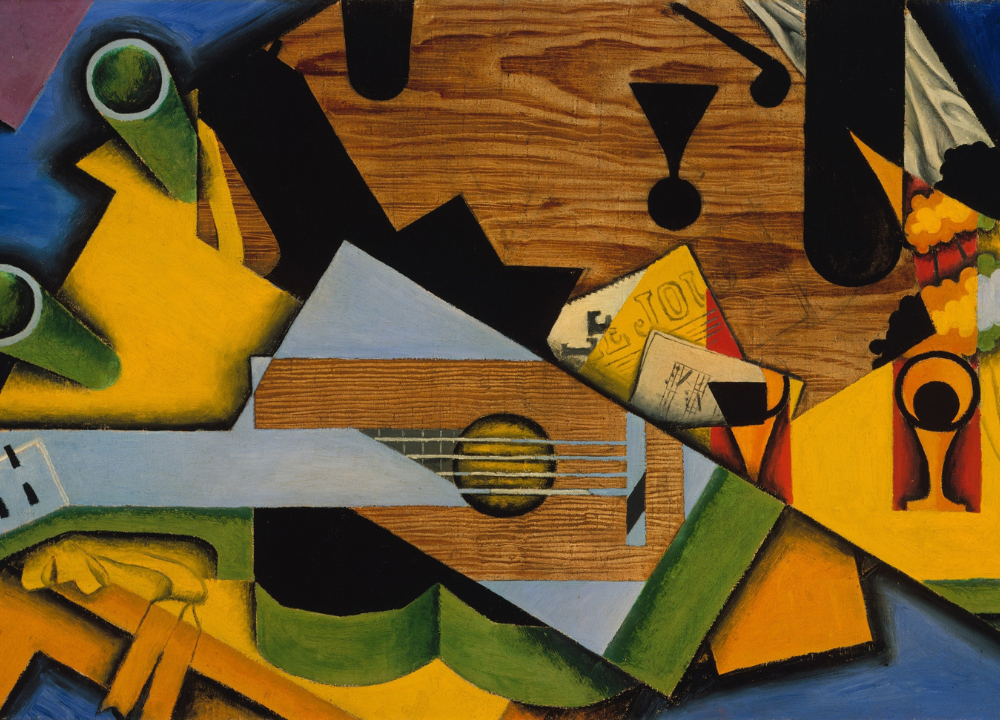Masterful Strokes: Picasso’S Most Iconic Artworks capture the immense talent of the legendary artist with their unique and groundbreaking qualities. Pablo Picasso, one of the most influential artists of the 20th century, left an indelible mark on the art world with his masterpieces.
His ability to effortlessly shift between different artistic styles, from Cubism to Surrealism, allowed him to create a diverse and awe-inspiring body of work. Picasso’s most iconic artworks, such as “Guernica,” “Les Demoiselles d’Avignon,” and “The Weeping Woman,” continue to captivate audiences with their distinctive visual language and profound emotional impact.
This article delves into his most celebrated creations and explores the genius behind Picasso’s brushstrokes that forever changed the art landscape.
Early Influences
Feast your eyes on Picasso’s most iconic artworks that showcase his early influences and masterful strokes. Discover the captivating expressions and vibrant colors that define the genius of this renowned artist.
Picasso, the legendary Spanish painter, sculptor, and ceramicist, was greatly influenced during his formative years. Understanding Picasso’s early influences is essential to appreciate the masterpiece collection he produced throughout his lifetime. Let’s delve into his childhood and early training, as well as his transformative Blue Period.
Childhood And Early Training
At a young age, Picasso demonstrated remarkable talent and interest in drawing and painting. Born in Malaga, Spain in 1881, his father, an art teacher, recognized his son’s artistic abilities early on. Picasso received formal training from his father, who nurtured his natural talent and provided him with the necessary foundation in art. His father’s guidance and exposure to various artistic styles allowed Picasso to develop a unique style that would later revolutionize the art world. Despite Picasso’s exceptional aptitude, he quickly outgrew his formal training and began to explore new realms of artistry.
Blue Period
The Blue Period marked a significant turning point in Picasso’s artistic journey. Lasting from 1901 to 1904, this period was characterized by a somber color palette dominated by shades of blue and green. Picasso’s works during this time explored themes of poverty, despair, and isolation. During the Blue Period, Picasso experienced personal hardships and witnessed the struggles of those around him, which deeply influenced his work. The emotional intensity conveyed through his paintings captivated audiences and catapulted Picasso into the spotlight.
Despite the melancholic undertones, Picasso’s Blue Period established him as a master of capturing human emotions on canvas. It laid the foundation for his future experiments with Cubism and set the stage for his artistic legacy. Understanding Picasso’s early influences, from his childhood to the transformative Blue Period, allows us to appreciate the evolution of his artistic genius. Stay tuned as we delve deeper into his most iconic artworks, examining the techniques, themes, and significance behind each masterful stroke.
Cubism: Revolutionary Approach To Art
Experience the revolutionary approach to art with Picasso’s most iconic artworks showcasing his masterful strokes in the realm of Cubism. Discover the unique and captivating blend of shapes, perspectives, and colors that redefine artistic expression.
Analytic Cubism
Analytic Cubism, an artistic movement pioneered by Pablo Picasso and George Braque in the early 20th century, marked a dramatic shift in how artists approached representation. Unlike previous art styles that sought to reproduce reality with accuracy, Cubism sought to deconstruct and reassemble objects and subjects from multiple perspectives.
The term “analytic” captures the essence of this approach, as artists analyzed the subjects into geometric shapes and fractured forms, emphasizing the complex structure of the objects. This style challenged traditional notions of realism and showcased a fresh perspective that resonated with the changing times.

Synthetic Cubism
Synthetic Cubism, the second phase of the Cubist movement, further pushed the boundaries of artistic expression. Picasso and Braque, among others, began exploring collage techniques, incorporating various materials and textures into their artworks.
Through the synthesis of different elements, artists sought to create a new reality. Fragmented elements were reassembled and collaged onto the canvas, often incorporating newspaper clippings, fabric, and other found objects. Synthetic Cubism introduced a sense of playfulness and innovation, challenging the traditional notion of what constitutes art.
With Synthetic Cubism, Picasso and his contemporaries expanded their creative boundaries, defying conventional artistic practices and producing truly groundbreaking artworks. By blending multiple elements and perspectives, they transformed traditional representation into a kaleidoscope of imagination and innovation.
Iconic Picasso Works From Blue Period
Pablo Picasso, one of the greatest artists of the 20th century, went through various artistic phases throughout his career. One of the most significant periods was the Blue Period, characterized by Picasso’s somber and melancholic style. During this time, he delved into themes of poverty, despair, and isolation, creating artworks that continue to captivate audiences today.
The Old Guitarist
Picasso’s masterpiece, “The Old Guitarist,” is a profound representation of the melancholic spirit of the Blue Period. Painted with a predominantly blue palette, the artwork depicts a blind and destitute musician immersed in his music. Through skillful brushstrokes, Picasso portrays the pain and solitude experienced by the old guitarist, making viewers reflect on the human condition and the power of art in expressing emotions.
La Vie
“La vie,” meaning “The Life” in French, is another noteworthy artwork from Picasso’s Blue Period. This painting explores themes of love, death, and the complexities of human relationships. In “La vie,” Picasso presents a somber scene, where a couple contemplates their existence amidst the challenges and uncertainties of life. The powerful imagery and introspective mood conveyed by the painting make it a profound reflection on the human experience.
Les Demoiselles D’avignon
“Les Demoiselles d’Avignon,” also known as “The Young Ladies of Avignon,” is a groundbreaking artwork that marked the beginning of Picasso’s transition into Cubism. Despite its significance in the artist’s career, this painting still carries the melancholic undertones of the Blue Period. Through geometric forms and distorted figures, Picasso portrays a group of women in a brothel, presenting a raw and unsettling representation of sexuality. This provocative painting challenged conventional artistic norms and paved the way for Picasso’s innovative approach to representation.
Iconic Picasso Works From Rose Period
In this section, we will delve into the mesmerizing world of Picasso’s iconic artworks from his Rose Period. During this period, which spanned from 1904 to 1906, Picasso’s artistic style underwent a profound transformation as he explored themes of romance and melancholy.
Boy With A Pipe
Picasso’s renowned painting, Boy with a Pipe, stands as a powerful representation of his Rose Period. This masterpiece captures the essence of youthful innocence combined with a tinge of contemplation. The boy’s rosy cheeks and dreamy gaze are accentuated by vibrant strokes of color, effortlessly drawing the viewer into the scene.
Family Of Saltimbanques
Family of Saltimbanques is another notable artwork from Picasso’s Rose Period. This poignant painting depicts a group of circus performers, their expressions melancholic, their figures elongated and isolated. Through the use of bold brushstrokes and muted tones, Picasso skillfully portrays the hardships and transient nature of their lives.
Iconic Picasso Works From Cubist Period
Pablo Picasso, the legendary Spanish artist, is widely regarded as one of the pioneers of the Cubist movement in the world of art. His abstract and revolutionary approach to portraying reality during the early 20th century revolutionized the art world. In this article, we will explore three of Picasso’s most iconic artworks from the Cubist period, namely Les Desmoiselles d’Avignon, Guernica, and Portrait of Dora Maar.
Les Desmoiselles D’avignon
Les Desmoiselles d’Avignon is considered a groundbreaking masterpiece of the Cubist movement. Painted in 1907, the artwork portrays five nude female prostitutes, but Picasso’s unique approach defies traditional representations of the female form. With its fractured, angular composition and distortion of perspective, Picasso challenges the viewer’s perception of space and form. This work signaled a major shift in Picasso’s style and laid the foundation for his future innovations in modern art.
Guernica
Undoubtedly one of Picasso’s most famous and politically charged works, Guernica depicts the horrors of the Spanish Civil War. Created in response to the bombing of the town of Guernica during World War II, the painting serves as a powerful indictment of violence and war. Picasso’s use of monochromatic colors and fragmented forms convey the anguish and chaos caused by the relentless bombing. Guernica stands as a timeless symbol of protest and a plea for peace in the face of human suffering.
Portrait Of Dora Maar
Picasso’s Portrait of Dora Maar showcases his ability to capture the complexities and emotions of his subjects. Dora Maar, a renowned photographer and artist, was one of Picasso’s most significant muses. Painted during the tumultuous years leading up to World War II, Picasso’s portrait captures the intensity and anguish in Dora Maar’s eyes. This artwork serves as a poignant reflection of the artist’s personal and emotional connections, transcending traditional notions of beauty and portraiture.
Later Works And Legacy
In the later years of his career, Pablo Picasso continued to push artistic boundaries and create masterful strokes that would leave a lasting impact on the art world. His later works showcased his versatility and innovative spirit, as he explored different styles and techniques. Picasso’s legacy as one of the greatest artists of all time is evident in his later works and the profound influence he had on modern art.
Surrealist Works
Picasso’s foray into surrealism during his later years showcased his ability to merge reality and imagination with astounding skill. His surrealist works, characterized by dream-like imagery and unconventional compositions, captured the essence of the subconscious mind. Pieces such as “The Weeping Woman” and “Dora Maar au Chat” exemplify Picasso’s mastery in using distorted forms and vibrant colors to convey complex emotions in his surrealist paintings.
Late Period Works
During his late period, Picasso’s artistic style underwent another transformation. He delved into abstraction and experimented with bold shapes and fragmented forms, pushing the boundaries of traditional art even further. His late period works showcased a departure from conventional representation and a more abstract approach. Paintings like “Guernica” and “Les Femmes d’Alger” exemplify his ability to convey deep emotions and powerful narratives through his distinctive style.
Influence On Modern Art
Picasso’s impact on modern art cannot be overstated. His bold and innovative approach paved the way for numerous artistic movements and inspired generations of artists. He challenged the notion of what art could be and opened up new possibilities for expression. Picasso’s revolutionary techniques, unique perspectives, and iconic artworks continue to captivate audiences around the world, making him a true pioneer of modern art.
Frequently Asked Questions On Masterful Strokes: Picasso’s Most Iconic Artworks
What Are Picasso’s Most Iconic Artworks?
Picasso’s most iconic artworks include “Guernica,” “Les Demoiselles d’Avignon,” and “The Weeping Woman. ” These masterpieces showcase his revolutionary approach to art and his ability to convey strong emotions through his unique style.
How Did Picasso’s Art Influence The Art World?
Picasso’s art had a profound influence on the art world. He pioneered the Cubist movement, which revolutionized modern art by challenging traditional techniques and perspectives. His bold and innovative style inspired countless artists, and his works continue to be celebrated and studied today.
What Makes Picasso’s Artwork So Unique?
Picasso’s artwork is renowned for its uniqueness due to his ability to constantly reinvent his style. From his Blue and Rose periods to Cubism and Surrealism, Picasso pushed the boundaries of artistic expression. His ability to capture emotions and interpret reality in unconventional ways set him apart from his contemporaries.
Conclusion
Picasso’s iconic artworks are a testament to his mastery of the canvas, his innovative use of color and form, and his ability to evoke profound emotions in his audience. From the mesmerizing lines of “Guernica” to the vibrant distortions of “Les Demoiselles d’Avignon,” each stroke reveals Picasso’s unique perspective on the world.
With a blend of cubism, surrealism, and abstraction, Picasso forever revolutionized the art world, leaving behind a legacy that continues to inspire and captivate generations to come. Explore his masterpieces and behold the genius of Picasso.




